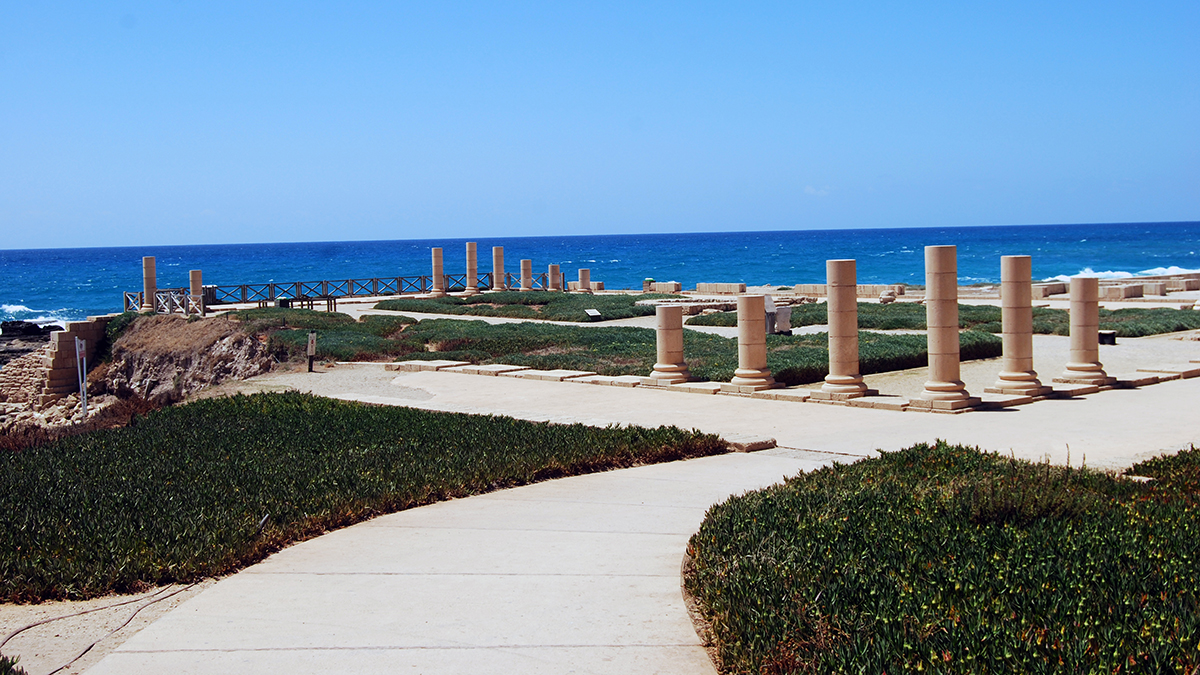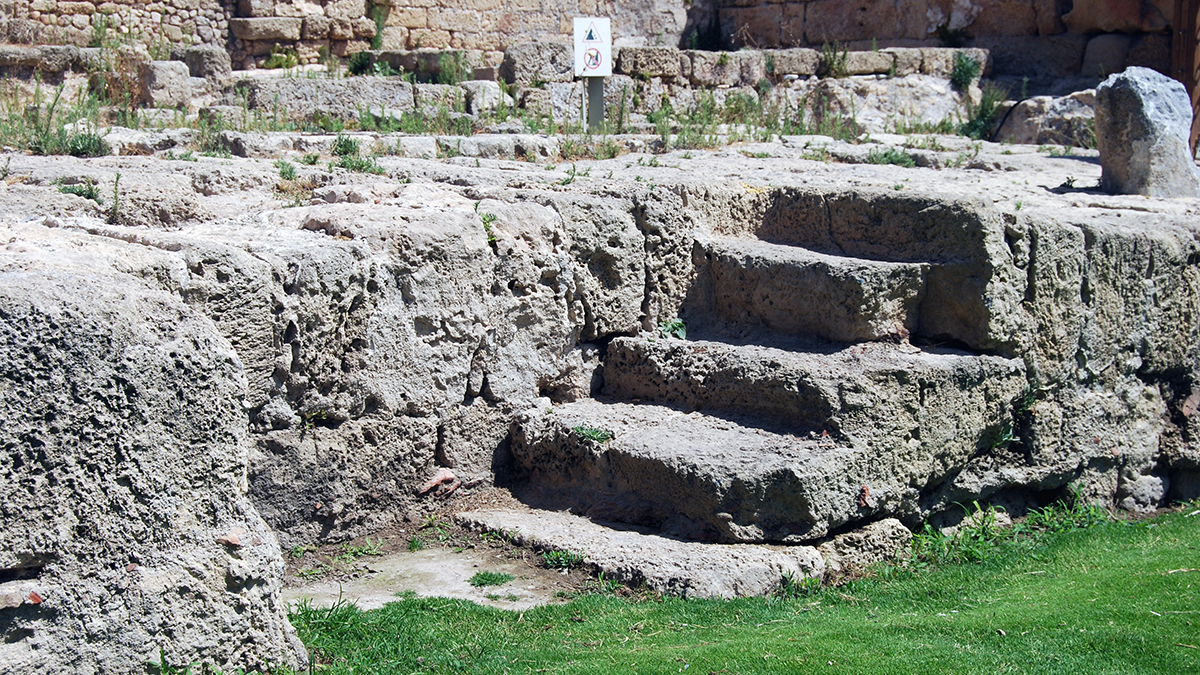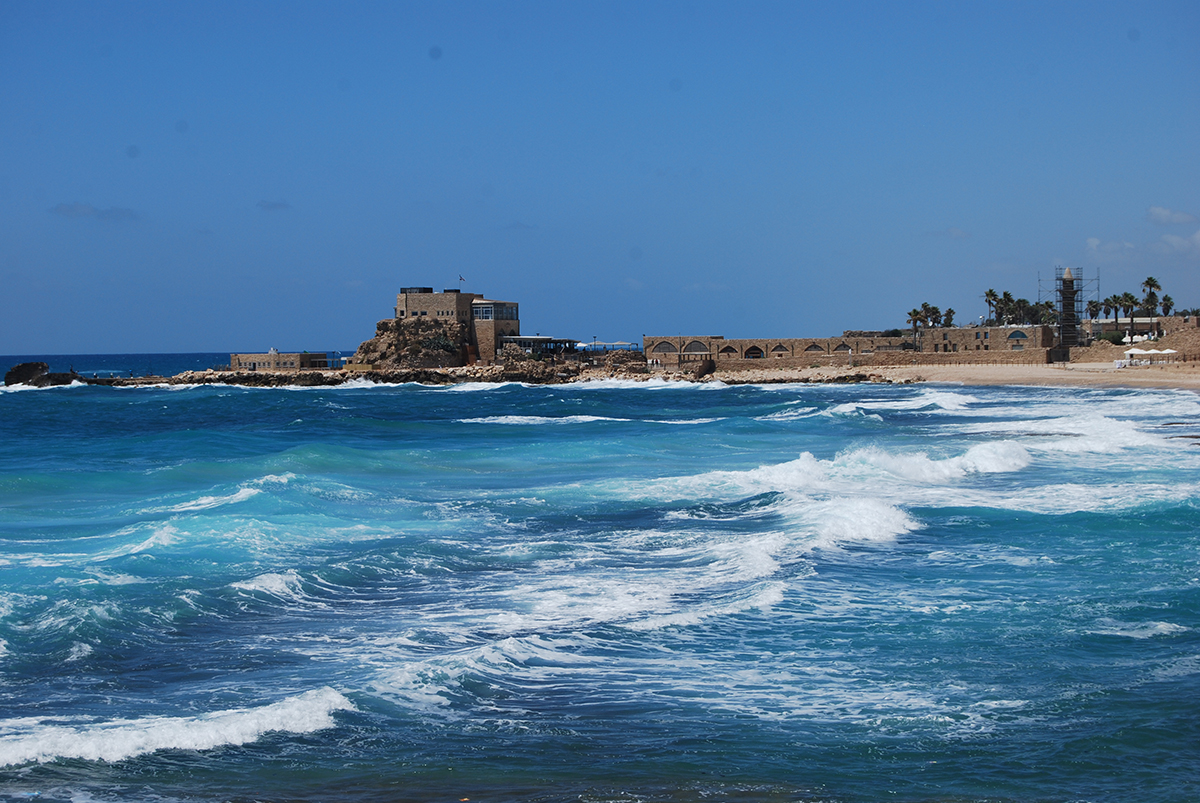

by Barry Britnell
Synopsis: The highlight of visiting the ancient city of Caesarea Maritima, located on the coast of north-central Israel, is not just in seeing the marvelous architectural remains but in remembering what happened there.
After Paul's third missionary journey, he made his way to Jerusalem. Some of the Jews, not happy to see him in the temple, had him falsely accused and arrested. Upon learning that Paul was a natural-born Roman citizen, the military commander transferred him to the city of Caesarea, which was the Roman administrative center for that region of the world.
Paul waited two years before he had the opportunity to state his case before the Roman leaders. During his testimony, Paul used his rights of Roman citizenship and appealed his case to Caesar. Shortly thereafter, Paul was led from where he was being held to the massive harbor at Caesarea.
King Herod built the harbor at Caesarea in the first century BC. The coastline in Israel does not have a natural harbor, so construction of any harbor in this region would be difficult at best. Precisely how King Herod pulled off such a mammoth project is still debated, but the most logical explanation is that he created massive, wooden, water-tight rectangular frames that could float. Once in place, large amounts of a concrete-type mortar were poured into the frames. When the top of the mortar reached above sea level, the frames would be disassembled, rebuilt, and reused. The resulting foundation stretched far out into the sea. When completed, this harbor ranked as the largest artificial harbor in the open sea.
The sea opening to the harbor was built facing north on the northwestern corner. King Herod placed the opening here on purpose. Currents in this area of the Mediterranean Sea flow from south to north. By placing the sea opening facing the north, he assured that the harbor would not fill with water.
In reality, the harbor at Caesarea consisted of an inner harbor and an outer harbor. Because of its overall size, travelers would board smaller vessels which would then transport them out to the larger ship that would be used to travel across the Mediterranean Sea.
When the apostle Paul came here, bound and headed for Rome, he undoubtedly traversed a similar path. Walking along the boardwalk of the inner harbor, he would have boarded a small boat and then floated to the outer harbor.
Alongside this article, you will see a picture of some of the steps to the inner harbor. Whenever I see these steps, I think about Paul and what he was probably thinking the last time he walked down these steps.
The harbor at Caesarea is a beautiful place to visit. I love taking groups of people there to see this magnificent site. However, it is even more wonderful to pause and remember the apostle Paul and how he used this harbor to help spread the blessed message of Jesus Christ.
Author Bio: Barry is the founder of Exploring Bible Lands, LLC (exploringbiblelands.com) and leads Bible study tours to the land of Israel. He also works with Appian Media (appianmedia.org) to produce biblically-sound videos used in teaching others about the Bible. Barry and his wife, Tabatha, have three children, live in Athens, AL, and worship with the Capshaw Church of Christ.

Image 1: The remains of King Herod’s palace at Caesarea.

Image 2: Steps of the inner harbor. During Biblical times, these steps would have given passengers access to smaller boats in the harbor.

Image 3: The waves of the Mediterranean Sea crash along the shoreline of Caesarea.
